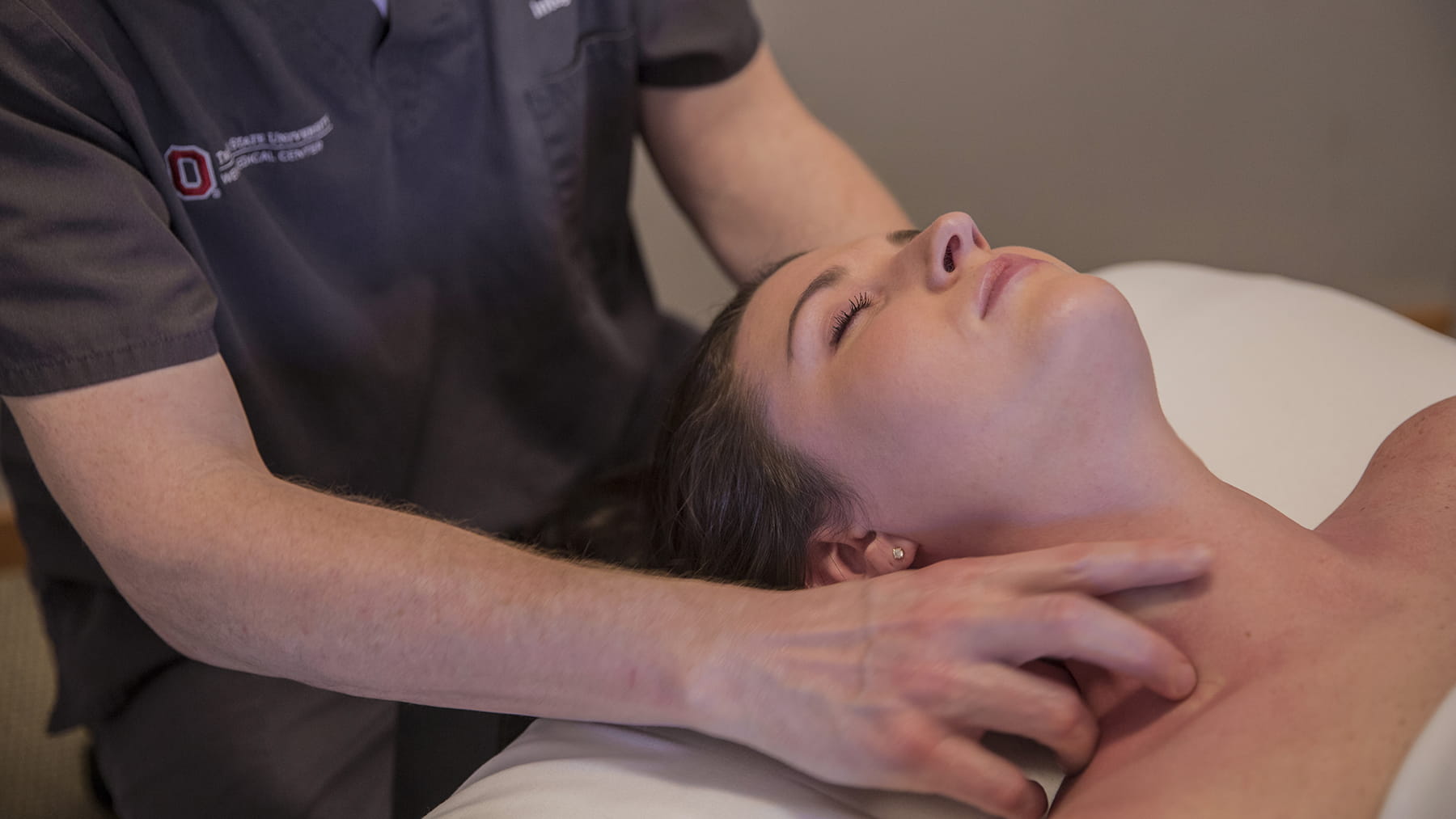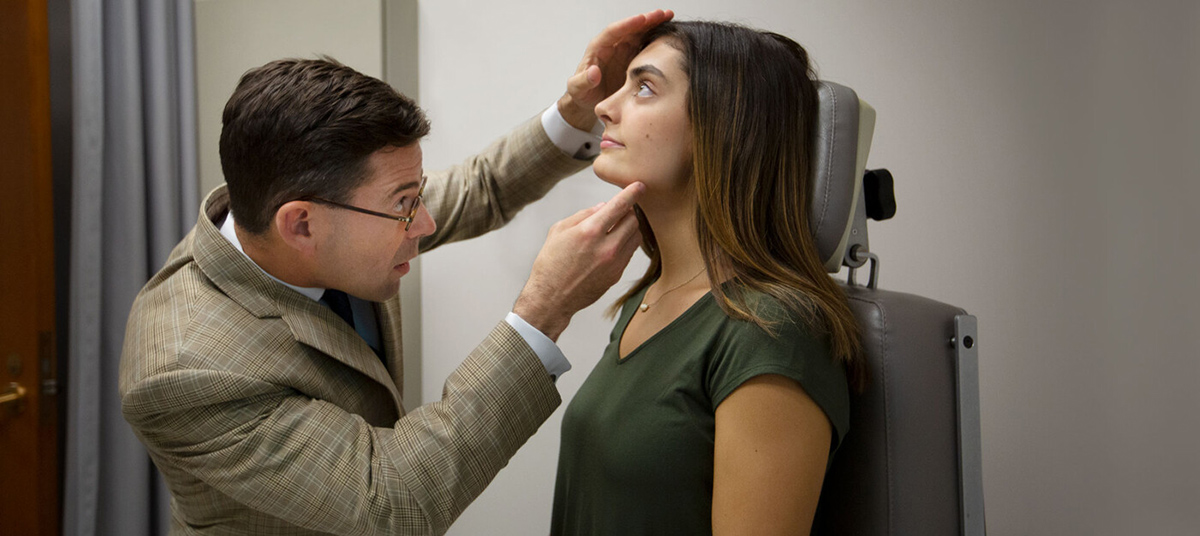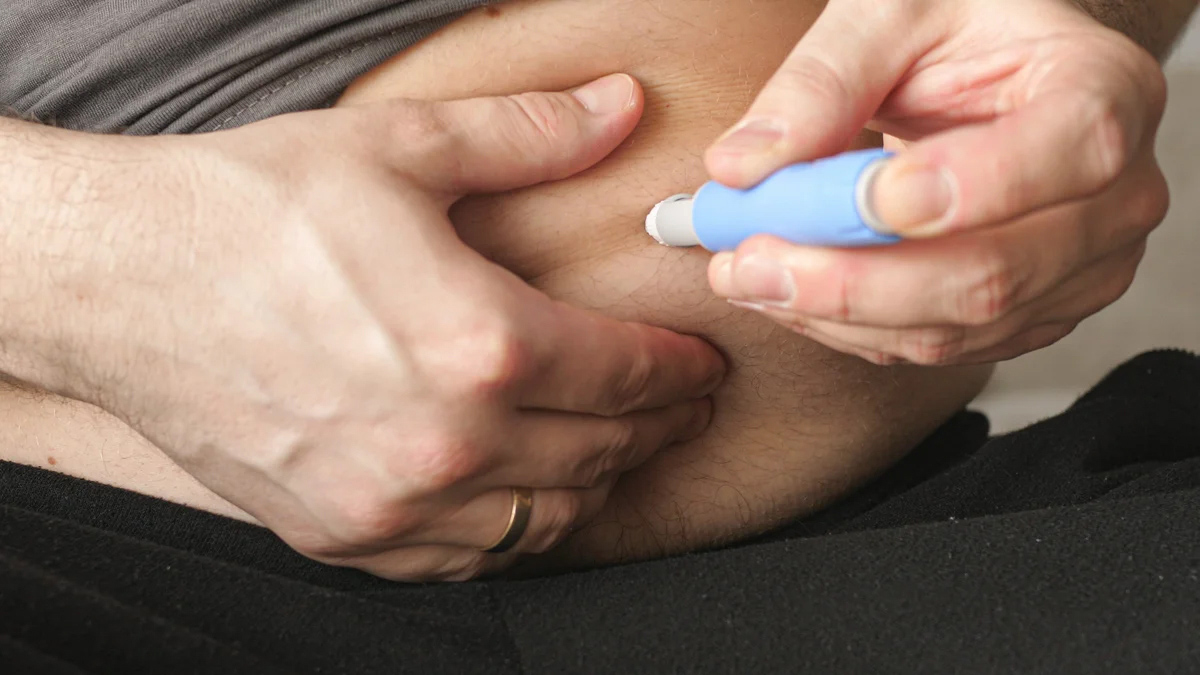

Finance
How To Get Insurance To Pay For Liposuction
Published: November 12, 2023
Learn how to finance your liposuction procedure and get your insurance to cover the cost. Find out the steps to take and tips to make it happen.
(Many of the links in this article redirect to a specific reviewed product. Your purchase of these products through affiliate links helps to generate commission for LiveWell, at no extra cost. Learn more)
Table of Contents
- Introduction
- Understanding Liposuction and Insurance Coverage
- Step 1: Research Your Insurance Policy
- Step 2: Consult with Your Healthcare Provider
- Step 3: Obtain Documentation and Medical Necessity
- Step 4: Submitting a Pre-Authorization Request
- Step 5: Appeal a Denied Claim
- Step 6: Consider Other Financing Options
- Conclusion
Introduction
Liposuction is a popular cosmetic procedure that involves the removal of excess fat deposits from specific areas of the body, typically through suction. It can be an effective solution for individuals looking to achieve a more sculpted and contoured appearance.
While liposuction is primarily considered a cosmetic surgery, there are instances where it can be deemed medically necessary. This raises the question of whether insurance companies will cover the procedure.
In this article, we will explore the steps you can take to increase the likelihood of insurance coverage for liposuction. From understanding your insurance policy to appealing denied claims, we will guide you through the process of navigating the insurance system effectively.
Please note that every insurance policy and individual case is unique, so it’s important to consult with your insurance provider and healthcare professional for specific guidance.
Now, let’s delve into the details and discover how you can potentially get insurance to pay for liposuction.
Understanding Liposuction and Insurance Coverage
Before diving into the steps to get insurance coverage for liposuction, it’s essential to understand some key aspects of the procedure and how insurance companies approach coverage.
Liposuction is typically considered a cosmetic procedure, meaning it is performed to improve appearance rather than to treat a medical condition. Insurance companies generally do not provide coverage for cosmetic surgeries, including liposuction, as they are not considered medically necessary.
However, there are situations where liposuction can be deemed medically necessary. For example, if a patient has lipomas (benign fatty tumors) that are causing pain or functional impairment, insurance companies may consider covering the liposuction procedure.
In some cases, insurance companies may cover liposuction if it is performed for reconstructive purposes, such as post-cancer removal of fatty tissues or to correct abnormalities resulting from trauma. This is often determined on a case-by-case basis and requires supporting documentation from your healthcare provider.
It is important to note that the criteria for insurance coverage vary among insurance companies and differ based on the specific policy. Therefore, it is crucial to thoroughly review your insurance policy and consult with your insurance provider to understand the extent of your coverage for liposuction.
Now that we have a better understanding of liposuction and insurance coverage, let’s move on to the steps you can take to increase the chances of getting insurance to pay for your liposuction procedure.
Step 1: Research Your Insurance Policy
To begin the process of getting insurance coverage for liposuction, it is crucial to thoroughly research and understand your insurance policy. This step will help you determine the extent of your coverage and whether liposuction is included.
Here are some important factors to consider when researching your insurance policy:
- Review your policy documents: Carefully read through your insurance policy documents, paying close attention to the sections related to cosmetic procedures, exclusions, and coverage limitations. Look for any specific language or clauses that mention liposuction or related procedures.
- Identify medically necessary conditions: Check if your insurance policy provides coverage for liposuction in specific cases, such as lipomas causing pain or functional impairment or post-cancer reconstruction. Make note of any criteria or documentation required to support your claim.
- Understand coverage limitations: Insurance policies often have limitations and caps on coverage amounts for certain procedures. Determine if there are any restrictions or maximum limits on coverage for liposuction, either in terms of the total cost or the number of areas eligible for coverage.
- Check for prior authorization requirements: Some insurance policies require pre-authorization or pre-approval for certain procedures, including liposuction. Find out if this is the case for your policy and note any specific steps or forms that need to be completed.
- Explore network restrictions: If your insurance policy has a preferred provider network, check if there are any restrictions regarding which healthcare providers or facilities you can use for liposuction procedures. In-network providers may have a better chance of receiving coverage.
It is advisable to make notes or create a document summarizing the key points from your insurance policy research. This will serve as a reference guide throughout the process and help you stay organized.
Once you have a clear understanding of your insurance policy, you can proceed to the next step, which involves consulting with your healthcare provider to assess the medical necessity of liposuction in your case.
Step 2: Consult with Your Healthcare Provider
After researching your insurance policy, the next step in obtaining insurance coverage for liposuction is to consult with your healthcare provider. They play a crucial role in assessing the medical necessity of the procedure and providing the necessary documentation to support your claim.
Here are some key points to consider during your consultation:
- Discuss your medical condition: Explain your specific medical condition and the reasons why you believe liposuction is medically necessary. Provide any relevant medical history, diagnostic tests, or previous treatments that support your case.
- Ask for a professional opinion: Request your healthcare provider’s professional opinion regarding the necessity of liposuction in your situation. They can help determine if it is the most appropriate treatment option and if it meets the criteria for insurance coverage.
- Obtain documentation: Ask your healthcare provider to provide supporting documentation, such as medical records, test results, images, and a detailed explanation of how liposuction will address your medical condition. This documentation is vital for the insurance company’s review process.
- Discuss alternative treatments: Inquire about alternative treatments or interventions that have been tried or considered before pursuing liposuction. Insurance companies often require evidence that less invasive or non-surgical options have been explored and deemed ineffective or inappropriate for your case.
- Understand potential risks and benefits: Make sure to discuss the potential risks, benefits, and outcomes of liposuction with your healthcare provider. This information will help you make an informed decision and communicate effectively with your insurance company.
Remember, your healthcare provider’s professional expertise and documentation are crucial in establishing the medical necessity of liposuction in your case. Openly communicate your concerns and ask any questions you may have during the consultation.
Once you have gathered the necessary documentation and received your healthcare provider’s recommendation, you can proceed to the next step, which involves submitting a pre-authorization request to your insurance company.
Step 3: Obtain Documentation and Medical Necessity
Obtaining the necessary documentation and medical evidence to support the medical necessity of liposuction is crucial in the process of getting insurance coverage. This step involves compiling the required documentation and presenting a strong case to your insurance company.
Here’s what you need to do:
- Gather supporting documentation: Collect all relevant medical records, test results, imaging studies, and supporting documentation from your healthcare provider. This may include previous treatment plans, diagnostic reports, photographs, and any other evidence that demonstrates the medical necessity of liposuction in your case.
- Provide a detailed explanation: Prepare a comprehensive explanation of your medical condition, emphasizing how liposuction is necessary for treatment and how it will improve your health and well-being. Be sure to include specific details about the impact of your condition on your daily life, functionality, and any associated pain or discomfort.
- Include a letter of medical necessity: Your healthcare provider can draft a formal letter of medical necessity that outlines your condition, the rationale for recommending liposuction, and why alternative treatments have been deemed ineffective or inappropriate. This letter should be concise, well-written, and supported by the accompanying documentation.
- Highlight supporting research: If there are medical studies, case reports, or scientific literature that support the use of liposuction for your specific condition, include references and summarize the key findings. This can help strengthen your case and demonstrate the medical validity of the procedure.
- Organize your documentation: Make sure all your documentation is organized, labeled, and presented in a clear and easily understandable format. This will make it easier for the insurance company to review and evaluate your case, potentially leading to a quicker and more positive decision.
Remember, the goal of this step is to present a clear and compelling case to your insurance company, demonstrating the medical necessity of liposuction in your situation. Providing comprehensive and well-documented information will increase your chances of getting insurance coverage.
Once you have gathered and organized all the necessary documentation, you can move on to the next step: submitting a pre-authorization request to your insurance company.
Step 4: Submitting a Pre-Authorization Request
Submitting a pre-authorization request to your insurance company is an essential step in the process of getting insurance coverage for liposuction. This step involves formally requesting approval from the insurance company before proceeding with the procedure.
Here’s how you can submit a pre-authorization request:
- Contact your insurance company: Reach out to your insurance company’s customer service department to inquire about their specific process for submitting a pre-authorization request for liposuction. Ask for any necessary forms or documents that need to be completed.
- Complete the pre-authorization form: Fill out the pre-authorization form with accurate and detailed information. Include any relevant medical documentation and letters of medical necessity that support your request. Double-check that you have provided all the required information to avoid any delays in the evaluation process.
- Submit the pre-authorization request: Send the completed pre-authorization form and supporting documentation to your insurance company following their specified submission method. This may include mailing the documents, uploading them through an online portal, or sending them via email. Keep copies of all documents for your records.
- Follow up with the insurance company: After submitting the pre-authorization request, follow up with your insurance company to ensure they have received your documents and to inquire about the estimated timeframe for their decision. Be prepared to provide any additional information or documentation requested during this process.
- Document all communication: Keep a record of all communication with your insurance company, including dates, names of representatives spoken to, and the details of the conversations. This documentation will be valuable if any issues or disputes arise during the review process.
Submitting a pre-authorization request is an important step in demonstrating the medical necessity of liposuction and increasing your chances of receiving insurance coverage. It allows the insurance company to review your case and make a determination based on the provided information.
Once the pre-authorization request is submitted and under review, you can proceed to the next step, which involves understanding how to appeal a denied claim, if necessary.
Step 5: Appeal a Denied Claim
If your pre-authorization request for liposuction is denied by your insurance company, don’t lose hope. You have the option to appeal the decision and provide additional evidence to support your case. The appeals process allows you to present your argument and potentially overturn the initial denial.
Here’s how you can navigate the appeals process:
- Review the denial letter: Carefully read the denial letter from your insurance company, paying attention to the reasons cited for the denial. Understanding the specific grounds for denial will help you address those issues in your appeal.
- Consult with your healthcare provider: Reach out to your healthcare provider and share the denial letter with them. They can provide additional insight, clarify any misconceptions or errors in the insurance company’s assessment, and potentially offer new documentation or arguments to strengthen your case.
- Prepare your appeal letter: Write a formal appeal letter to your insurance company, addressing the reasons for the denial and presenting any new evidence or supporting documentation. Clearly explain why you believe liposuction is medically necessary and how it will benefit your health and well-being. Be concise, objective, and persuasive in your arguments.
- Submit your appeal: Send your appeal letter and any additional supporting documentation to your insurance company, following their specified appeals process. Make sure to provide all requested information within the designated timeframe. Keep copies of all documents for your records.
- Follow up on your appeal: After submitting your appeal, proactively follow up with your insurance company to confirm receipt of your appeal letter and to inquire about the progress of the review process. Stay organized and document all communication, including dates, names of representatives, and the details of the conversations.
- Consider external assistance: If your appeal is denied again, you may consider seeking assistance from a healthcare advocate or legal professional who specializes in insurance appeals. They can provide guidance, help strengthen your case, and navigate the complex appeal process.
Remember, the appeals process can often be lengthy and challenging. Patience, persistence, and thoroughness are key. By providing compelling arguments, new evidence, and professional guidance if needed, you increase your chances of reversing the denial and getting insurance coverage for liposuction.
While waiting for the decision on your appeal, it’s helpful to explore other financing options, which we will discuss in the next step.
Step 6: Consider Other Financing Options
If insurance coverage for liposuction is not possible or if you are still awaiting a decision on your appeal, it’s essential to consider alternative financing options. These options can help make the cost of the procedure more manageable and allow you to proceed with liposuction without insurance coverage.
Here are some financing options to explore:
- Payment plans: Inquire with your healthcare provider about the possibility of setting up a payment plan for the liposuction procedure. They may offer flexible payment options that allow you to pay in installments over a specified period, which can make the cost more affordable.
- Medical credit cards: Research medical credit cards specifically designed for healthcare expenses. These cards often offer promotional financing options, such as zero-interest periods or low-interest rates, allowing you to pay for the procedure over time without incurring high interest charges.
- Personal loans: Explore the option of obtaining a personal loan from a bank, credit union, or online lender. Personal loans can provide a lump sum amount that you can use to cover the cost of liposuction. Compare interest rates, terms, and repayment options to find the most suitable loan for your needs.
- Crowdfunding: Consider launching a crowdfunding campaign to raise funds for liposuction. Share your story, explain the medical necessity, and reach out to family, friends, and the broader community for support. Crowdfunding platforms make it easy to create a campaign and share it through social media.
- Savings or flexible spending accounts: Dip into personal savings or utilize funds from a flexible spending account (FSA) or health savings account (HSA) if you have one. These accounts allow you to set aside pre-tax dollars for eligible medical expenses, including liposuction.
It’s important to carefully consider the terms, interest rates, and repayment plans associated with any financing option you choose. Be mindful of your budget, taking into account both the cost of the procedure and your ability to comfortably repay the borrowed funds.
By exploring these alternative financing options, you can still proceed with liposuction even if insurance coverage is not available or while awaiting a decision on your appeal.
Finally, remember that obtaining insurance coverage for liposuction can be a complex process, and success may vary depending on individual cases and insurance policies. Utilize the steps provided in this article as a general guide, but always consult with your healthcare provider and insurance company for personalized advice and guidance.
With thorough research, careful planning, and perseverance, you can increase your chances of finding a solution that works for you, allowing you to undergo liposuction and achieve your desired results.
Conclusion
Obtaining insurance coverage for liposuction can be a challenging process, but with thorough research, effective communication, and perseverance, it is possible. Understanding your insurance policy, consulting with your healthcare provider, and gathering the necessary documentation are crucial steps in increasing the likelihood of insurance coverage.
If your pre-authorization request is denied, don’t lose hope. You have the option to appeal the decision, providing additional evidence and arguments to support the medical necessity of liposuction. Consider seeking assistance from healthcare advocates or legal professionals who specialize in insurance appeals if needed.
In case insurance coverage is not available or while awaiting a decision on your appeal, explore alternative financing options. Payment plans, medical credit cards, personal loans, crowdfunding, and utilizing savings or flexible spending accounts can help make the cost of liposuction more manageable.
Remember, every insurance policy and individual case is unique, so it’s crucial to consult with your insurance provider and healthcare professional for personalized guidance. They can provide specific information based on your policy and medical condition.
Ultimately, the goal is to achieve the desired results of liposuction while navigating the complexities of insurance coverage. By being proactive, persistent, and resourceful, you can overcome challenges and find a way to make liposuction a reality.
Disclaimer: This article is for informational purposes only and should not be considered as professional or legal advice. Always consult with your healthcare provider and insurance company for personalized guidance and information related to your specific case.














